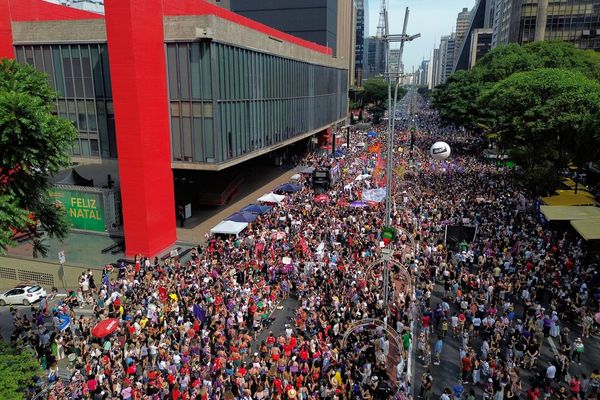
The quote, easy enough to find, is from the late Chinese leader Mao Zedong.
But there's no name or other marking to identify who painted the mural, titled “Education for the People,” dating to the late 1970s and filled with images including a man with one wrist in a shackle on which “Chicano” is written and the other arm bound by a rope.
Who painted it is something that artists have wanted to know because they’re hoping to restore the mural, which is faded and chipping.
“I’d often wondered about the author,” Chicago mural historian and writer Jeff Huebner says. “We’ve long thought it was Aurelio” Diaz but weren’t “entirely sure.”
Now living in Mexico, Diaz, who also goes by Aurelio Diaz Tekpankalli, confirms that he painted “Education for the People” with the help of other artists.

Told there’s an effort underway to touch up the old painting, he says he’s all for it “if they’re going to do something of that quality” of the original.
Huebner describes Diaz as Pilsen and Little Village’s “most prolific, committed community muralist in the 1970s, ‘80s and ‘90s.”
In 1978, he “painted several murals on Cermak between California and Kedzie sponsored by an organization called Residents for a Better Marshall Square Community," Huebner says.
He says “a number of his outdoor works remain,” though many are “in a degraded state.”
Diaz also created a mural featuring 22 faces in 1976 on 16th Street with help from students at nearby St. Procopius parish.

That “Education for the People” has remained largely intact “really shows you the level of respect that it has in the neighborhood just by virtue of its longevity," Huebner says.
Diaz painted the mural on the side of a brick building that's home to a hardware store. It stands across a driveway from a Subway sandwich shop.
Gloria Talamantes is one of the artists hoping to restore it.
“It’s important to keep that up so we can continue to educate about the history of the area as well as the rich history of art that existed in Little Village,” the South Lawndale artist says.

Talamantes says Diaz's mural conveys to her “that there is power within the people.”
She says “there are things we don’t learn in school” that can be learned “from murals and visual arts.” Last year, she and Delihah Salgado created a mural next to “Education for the People” titled “Modern Warriors” to “create a dialogue for the youth in our communities about online safety.”

The two kids in the painting are sitting back to back — symbolic, Talamantes says, of the saying, “I have your back.”
In June, Talamantes, Jamiah Calvin and a Mexican artist who goes by ROCO did another mural on the other side of Diaz’s artwork.

Talamantes says that the new mural, titled "Joy," is meant to “uplift anyone who would pass by there, but it’s also supposed to be a representation of the neighborhood. Cermak, in general, is kind of a dividing line between the African American community and the Latino community. We want to continue the work of solidarity between races.”
The artwork was part of the Brown Wall Project, “a citywide public art initiative to beautify the city of Chicago’s neighborhoods plagued by the brown buffed walls” created by city crews that use brown paint to cover what they deem to be graffiti.







